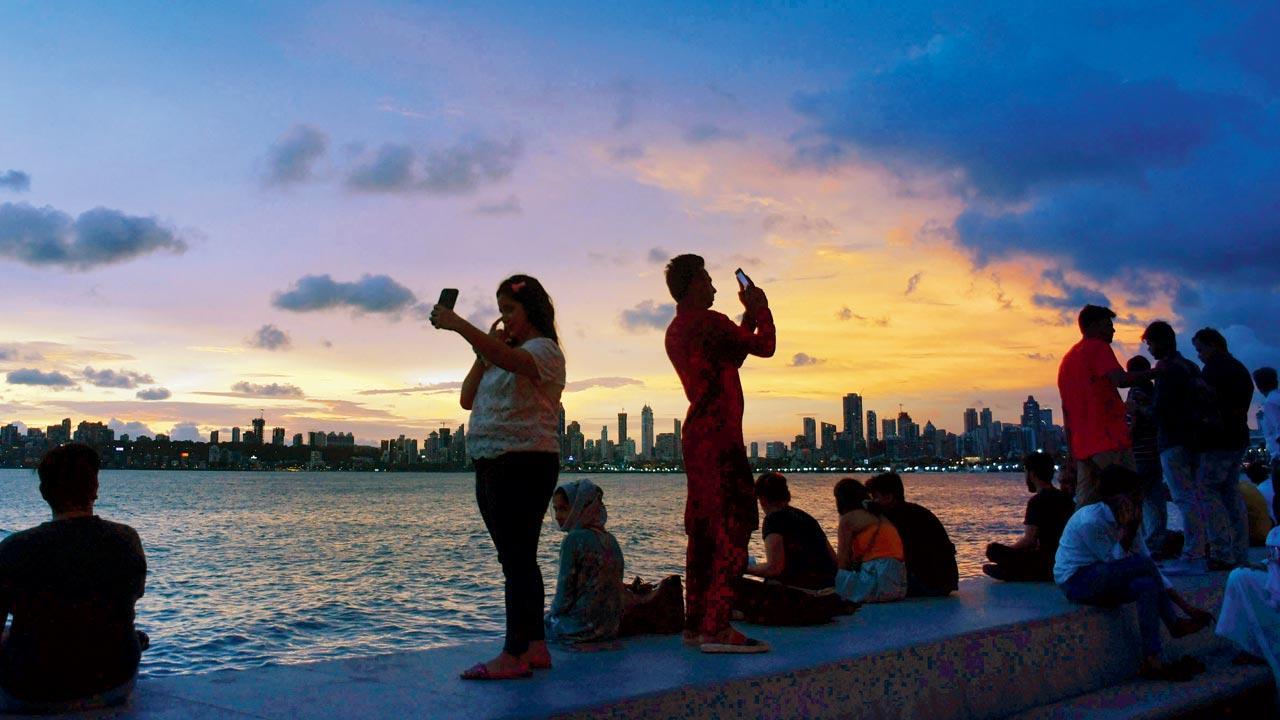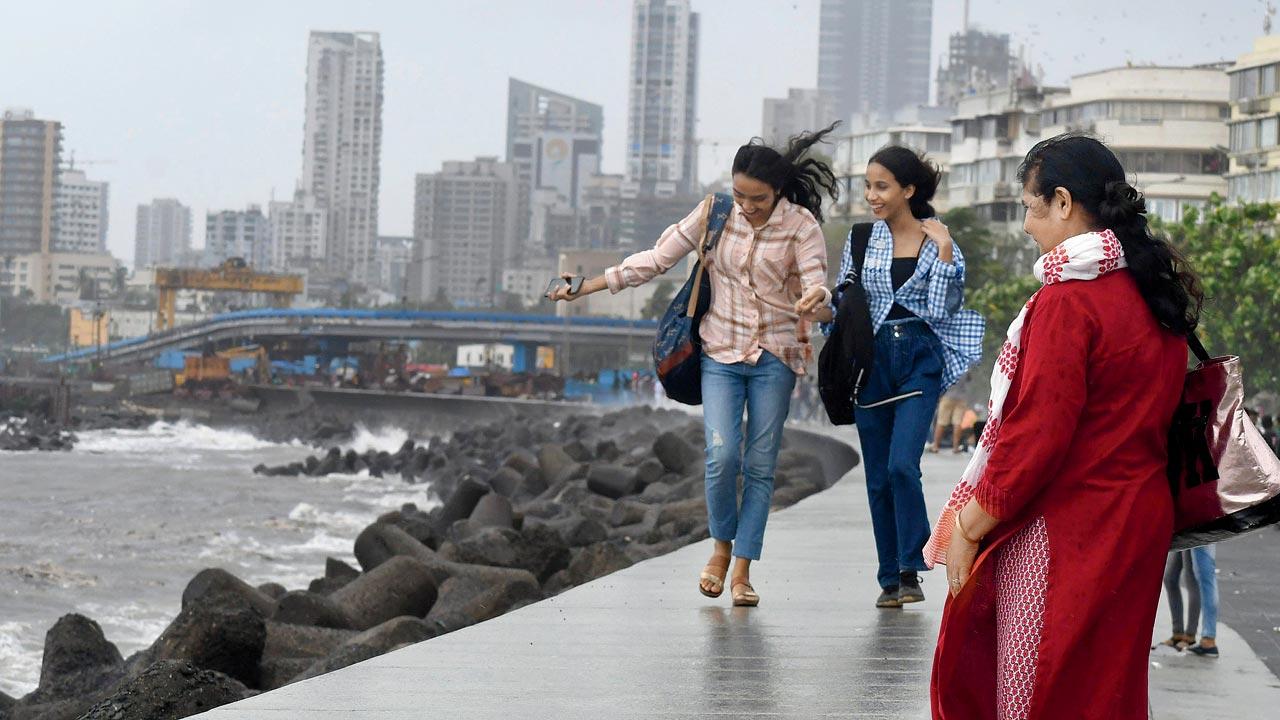Data for June and July show Mumbai recorded best AQI scores since 2019; air level was better than Pune, Delhi on Friday

People enjoy fresh air at Marine Drive, in June. Pic/Ashish Raje
Since June, Mumbai’s air quality has been the cleanest in the past three years, thanks to monsoon, experts said on Friday. The city has been recording the air quality index (AQI) level ranging between 10 and 35 almost daily since June. On Friday, Mumbai had the best AQI of 36, compared to Pune at 58, Ahmedabad at 50 and Delhi at 55.
The air quality will remain ‘excellent’ for a few more days, according to the forecast of the System of Air Quality Weather Forecasting and Research (SAFAR), which has been monitoring the AQI since June 2015.
ADVERTISEMENT

People enjoy the monsoon at Marine Drive on July 14. Pic/Ashish Raje
Mumbai’s AQI was 28 on June 14 and 10 (one of the best) on July 2. According to SAFAR, Mumbai last recorded the best air quality on September 4, 2019, at 12.
An AQI between 100 and 199 is considered ‘moderate’, 50 and 99 ‘satisfactory’ and below 50 ‘good’. Meanwhile, an AQI over 200 is considered ‘poor’, above 300 ‘very poor’, above 400 ‘severe’ and above 500 ‘severe plus’.
Thanks to monsoon
Experts attributed the decline in air pollution levels to favourable weather circumstances, such as the monsoon in Mumbai and strong landward winds. However, experts also said the trend of rapidly improving air quality for over a month shows a dip in localised pollution.
Smoke from garbage burning, dust, construction work and pollution due to vehicular and industrial emissions mainly contribute to the pollution in Mumbai, referred to as localised pollution.
“It is common knowledge that during monsoon, air quality improves and gets better. Although the combination of high moisture, low wind speed and humidity during monsoon force the city’s rising smoke and dust to hang in the air, making the overall air quality very poor, heavy sea breeze and consistent rainfall make the air clean,” said Gufran Beig, project director of SAFAR.
Talking about the coming days, Beig said, “If the wind speed slows down in the next few days, the air quality will start deteriorating again.”
Detailing the improving AQI in the city and adjoining areas, Beig said, “The winds delivering air pollution from the oceanic side have a significant impact on Mumbai’s air quality. However, some contributions could come from neighbouring island nations, which are closer to the sea around Mumbai. Even if Mumbai’s pollution is low, toxins transported from the surrounding region have an impact on its air quality. However, during this time of the year, monsoon spreads massively horizontally, and the upper air is relatively cleaner, therefore, no external air contaminants are injected into the city sky. As a result, the horizontal spread of the monsoon is negligible, which has resulted in the best air quality in the past three years.”
Mumbai witnesses highest pollution levels in December and January, and the lowest in September, post the monsoon. “The air quality is between good and satisfactory during June to August,” Beig said.
“The two dust storms that slammed Mumbai’s shoreline in the last week of January and the first week of February rendered the air nearly unbreathable, with the AQI reaching 500, the worst quality ever for humans to breathe. A couple of days in late May, the city’s AQI touched between 250 and 300, which is poor. However, since June, the air quality has improved,” said an official from India Meteorological Department (IMD).
Sept 4
Day air was last cleanest in 2019
Air quality on Friday
. Bhandup: 41 (good)
. Colaba: 15 (good)
. Malad: 59 (satisfactory)
. Mazgaon: 25 (good)
. Worli: 42 (good)
. Borivli: 42 (good)
. Bandra-Kurla Complex: 38 (good)
. Chembur: 39 (good)
. Andheri: 57 (satisfactory)
. Navi Mumbai: 50 (satisfactory)
 Subscribe today by clicking the link and stay updated with the latest news!" Click here!
Subscribe today by clicking the link and stay updated with the latest news!" Click here!







